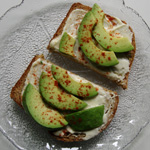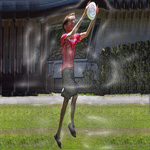 The story of Jerry and May (“Coed”) should give pause to anyone who invests all his or her self-concern in psychological continuity and connectedness.
The story of Jerry and May (“Coed”) should give pause to anyone who invests all his or her self-concern in psychological continuity and connectedness.
To summarize the plot: Jerry, a 40-year-old neuroscientist, is diagnosed with devastating rapid-onset dementia, a prospect which he regards as equivalent to death. To save himself, he hits on the plan of copying his psychological attributes to the brain of a graduate student, a young woman named May. The copying process ‘reads’ his brain-states and ‘writes’ them to her brain, effectively reproducing his memories, abilities, personality, and other psychological dispositions.
Sticklers would regard this as a breach of academic ethics. But Jerry, although manifestly self-centred, is not without a conscience. The process he employs does not damage May’s psychology; instead, it takes advantage of redundant capacity in her brain to add his psychological attributes to her own.
Before the mental merger takes place, Jerry sees transference of his psychological attributes to May as a way to escape the fate of his disease. He anticipates having a future in May’s body, which he expects to share with May herself.
The procedure works according to plan. When they wake up, the personalities of both May and Jerry are recognizably present in May’s body. All is not smooth sailing – May and Jerry find themselves in competition for motor control of a single body. In order to act effectively, they must cooperate. Sometimes the best way is for one to sit back passively and ‘let the other drive.’
But it is not an equal relationship – Jerry is at a distinct disadvantage. May is at home in her body, and perfectly competent to manage it, but Jerry finds it foreign and difficult. When he planned his transformation, he failed to anticipate the full impact of the physical dissimilarity it entailed: the sex change, the reduced physical stature, the girlish voice, loss of the gravitas that society concedes to the mature. With May’s body, Jerry is more awkward than a pubescent teen. Continue reading “Lessons of Human Fusion”





 Audiences of the movie
Audiences of the movie